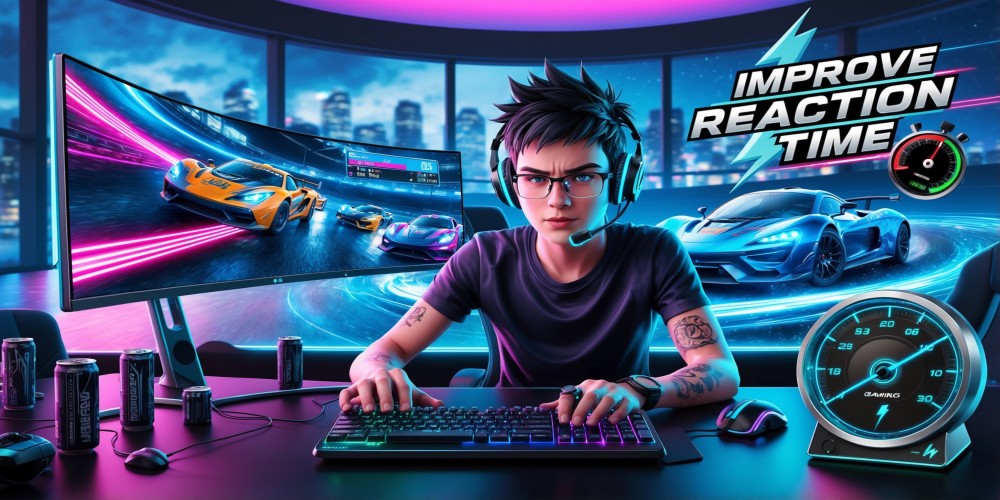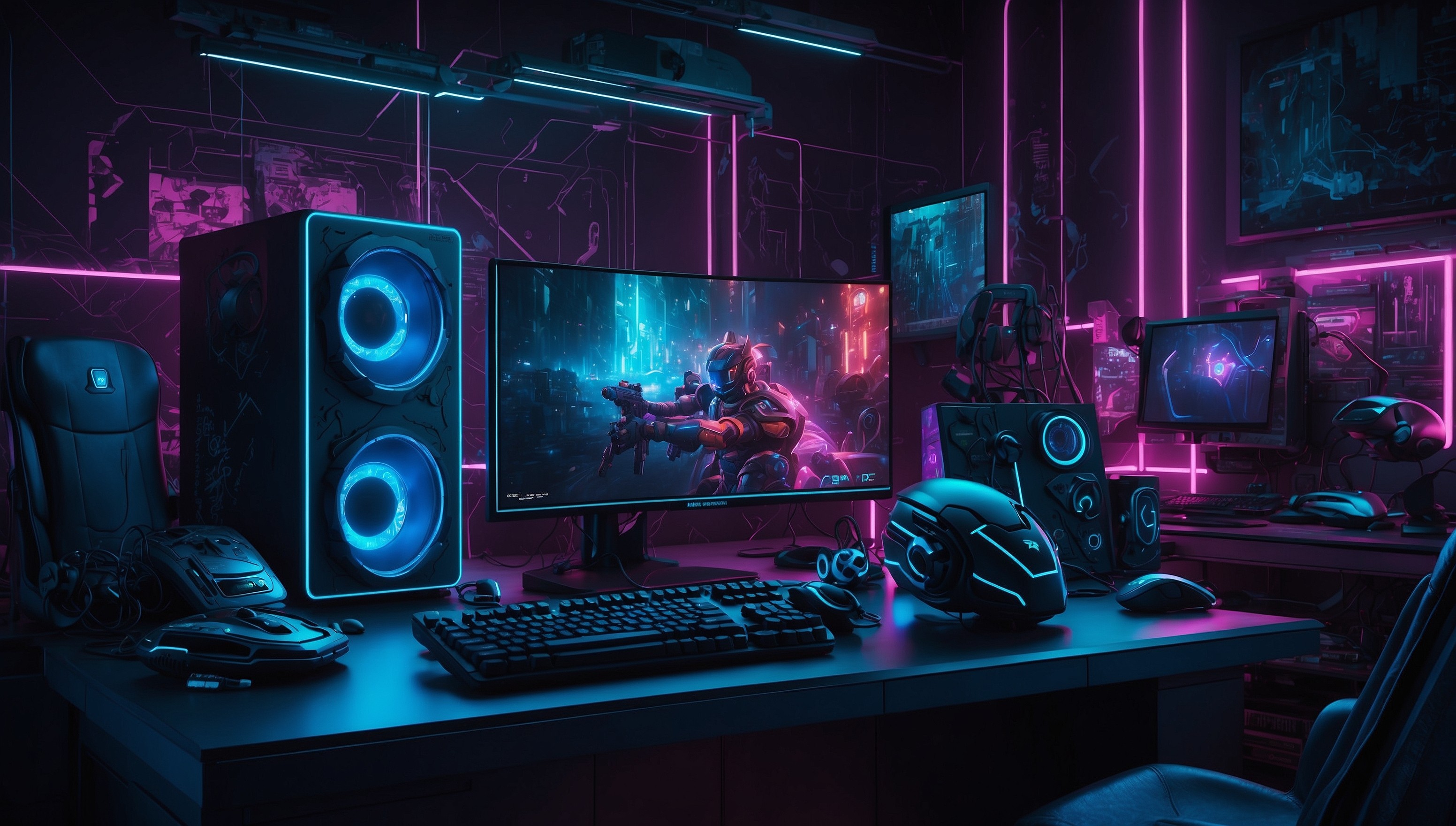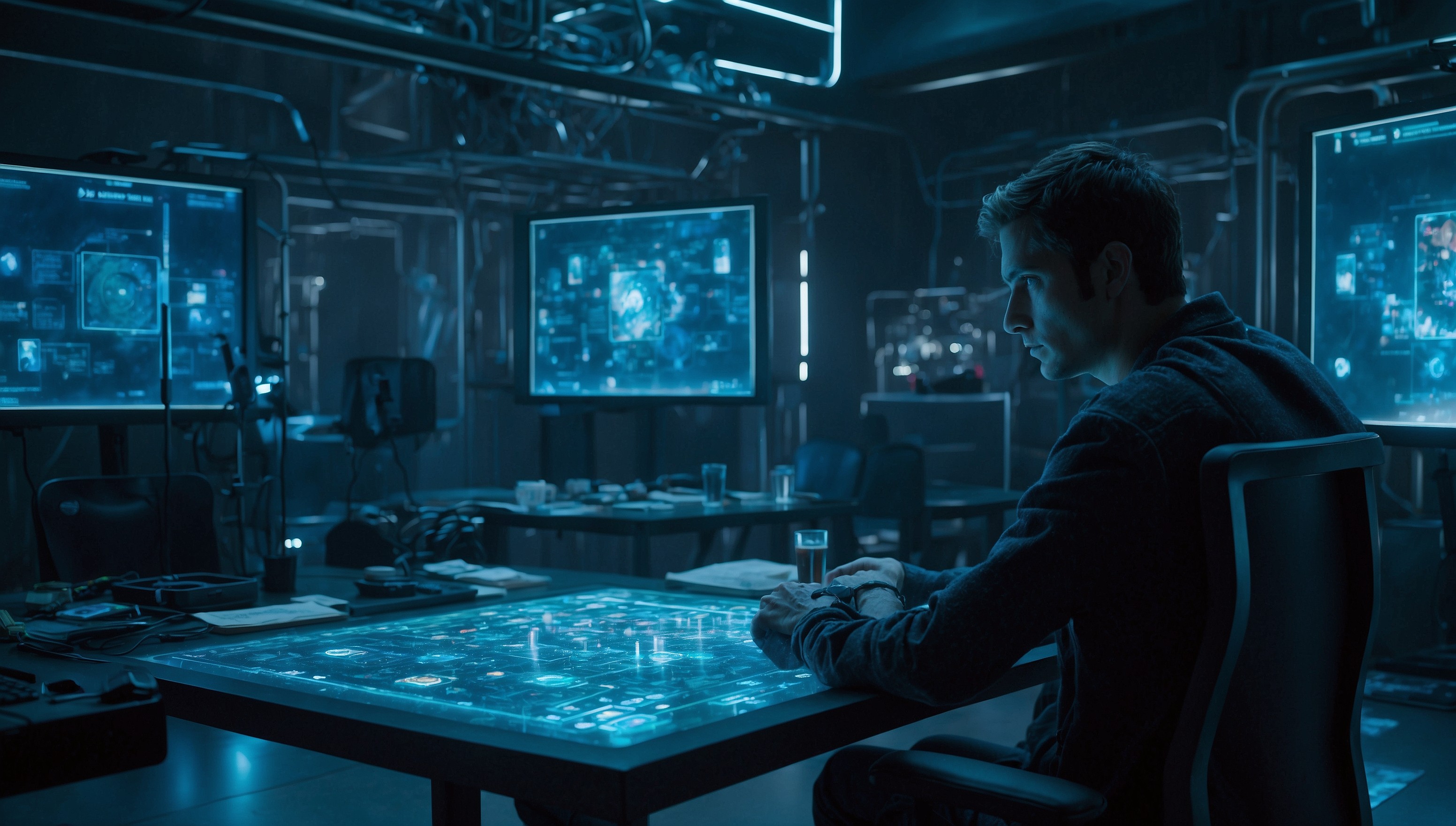Game On: Amp up Your Reaction Speed
Sep-02-2024

Ever felt like the difference between victory and defeat is just a split second? Whether you're dodging bullets in a first-person shooter or outmaneuvering your rivals in a high-octane racing game, reaction time can make or break your gameplay. It’s that razor-thin line between clutching a win and facing defeat. But don’t worry—improving your reaction time isn’t about having some kind of superpower. It’s about training, tweaking your setup, and honing your skills to be at your absolute best. Let’s dive into what you need to get that edge!
Why Reaction Time Matters in Gaming
In fast-paced games, reaction time is your secret weapon. It’s what allows you to anticipate an opponent’s next move, execute complex maneuvers, and make split-second decisions. Imagine you’re in a heated match, and suddenly, your opponent makes a move you didn’t see coming. That’s where reaction time comes into play—either you react quickly, or you’ll be staring at a game-over screen faster than you can say 'respawn.' In competitive scenes, even milliseconds can be the difference between winning a match or being knocked out of the tournament.
Warm Up Before You Play
Just like athletes warm up before a game, gamers should too. A proper warm-up can get your fingers and mind ready for the speed and precision required. Start with some simple hand stretches to loosen up those muscles. Then, dive into a practice round of your game or use aim trainers like Aim Lab. These tools are great for sharpening your reflexes and improving your muscle memory. By getting your hands moving and your mind engaged, you’ll jump into your games feeling quicker and more responsive.
Practice, Practice, Practice

If there’s one thing that’ll take you far in gaming, it’s practice. But we're not just talking about hours of mindless playtime—no, it’s about practicing smart. Focus on game modes or training maps that specifically challenge your reaction time. For example, if you’re into shooters, go for modes that emphasize quick reflexes, like 1v1 duels or custom scenarios designed to improve your aim. The more you train in these situations, the more your brain and hands will synchronize when the pressure is on.
Set Up Your Environment
Now, let’s talk about your gaming setup. A chaotic setup can seriously slow down your reactions. Here are several unique considerations to bear in mind:
- Adjust Your Mouse Sensitivity: Finding the right sensitivity is like finding the perfect pair of shoes—it has to feel just right. A sensitivity that’s too high might make your aim sloppy, while a sensitivity that’s too low can slow you down. Spend some time fine-tuning it until you can snap to targets without overshooting.
- Invest in a Quality Monitor: If you’re serious about improving your reaction time, a high refresh rate monitor is a must-have. Monitors with 120Hz or 240Hz refresh rates display frames much faster than standard monitors, giving you those precious milliseconds to react to in-game movements.
- Optimize Your Input Lag: Input latency is the pause that occurs from the moment you push a button until the corresponding action takes place and seeing the action happen on screen. Reducing it can make your responses feel snappier. Go into your game’s settings and turn on options like 'Game Mode' or reduce graphical settings to minimize input lag.
Mindfulness and Focus
It might sound a little out there, but hear me out: mindfulness is key to improving reaction time. Your brain is the real MVP when it comes to reacting quickly, and keeping it focused is crucial. Ever find yourself zoning out during a long gaming session? It happens to the best of us. To keep your mind sharp, take short breaks between games and try some breathing exercises to stay in the zone. A focused mind means a quicker reaction time when it counts.
Diet and Hydration: Fueling Your Reactions

Understanding the mechanics of your favorite game is a bit like learning the ropes of a new sport. The more you know about it, the better you’ll be at predicting what’s coming next. For example, if you’re playing a battle royale game, study the weapon recoil patterns and movement mechanics. Knowing how your character moves and how the physics of the game work allows you to anticipate moments before they happen. It’s like knowing the script to a play—you can react before the action unfolds.
Train Your Peripheral Vision
Reaction time isn't just about what’s right in front of you—it’s also about your peripheral vision. Training your ability to notice movement at the edges of your screen can give you a serious edge, especially in games where enemies can sneak up on you. Try exercises like focusing on a point on the screen while trying to detect movements around the edges. With time, you’ll start to notice threats before they’re in your face.
Don't Forget to Rest
It's easy to get lost in the grind, chasing that next level or rank, but fatigue can slow down your reaction time. When you’re tired, your brain's processing speed takes a hit, making it harder to react quickly. Listen to your body—take breaks when you need them, and don’t be afraid to step away from the screen for a bit. After a good rest, you’ll return feeling refreshed and ready to take on the competition. Remember, a well-rested gamer is a fast-reacting gamer!
Compete with Friends
If you’re looking for a fun way to boost your reaction speed, why not make it a competition with your friends? Set up some challenges like speed-runs or aim duels. Competing against friends adds a layer of excitement and pressure, which is perfect for simulating those high-stakes moments in a game. Plus, it’s always fun to see who comes out on top, and it’ll push you to be better than ever!
Track Your Progress

As with any skill, tracking your progress is key to improvement. Keep an eye on your in-game stats, whether that’s your accuracy percentage, response time in training games, or your performance in matches. By seeing where you improve over time, you’ll get that extra motivation to keep going. Plus, tracking your progress lets you adjust your training methods and focus on areas that need a little more work.
Final Thoughts: Consistency Is Key
At the end of the day, improving your reaction time takes patience and consistency. It’s not something that’ll change overnight, but with steady practice, a little patience, and the right mindset, you’ll notice yourself becoming quicker and more precise. Remember, every moment you spend sharpening those reflexes is an investment in your gaming skills. So keep at it, stay positive, and before you know it, you’ll be reacting to every in-game situation like a pro.
Now, get out there and put these tips into action. Your future self, and your teammates, will thank you when you're pulling off those clutch plays!







